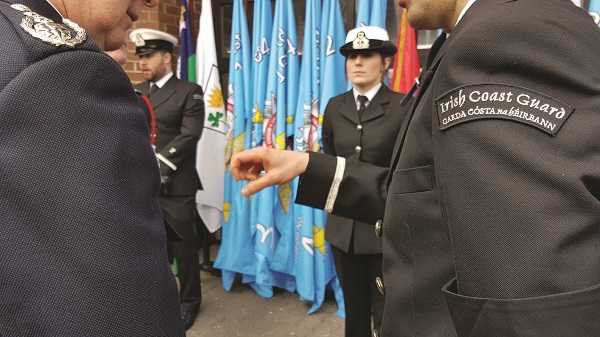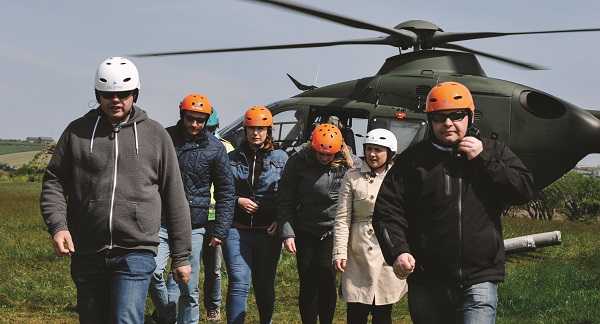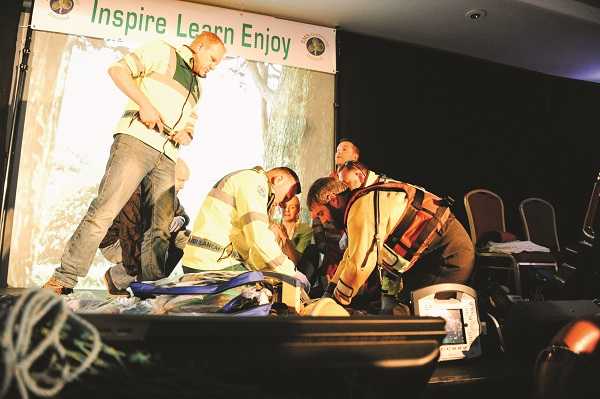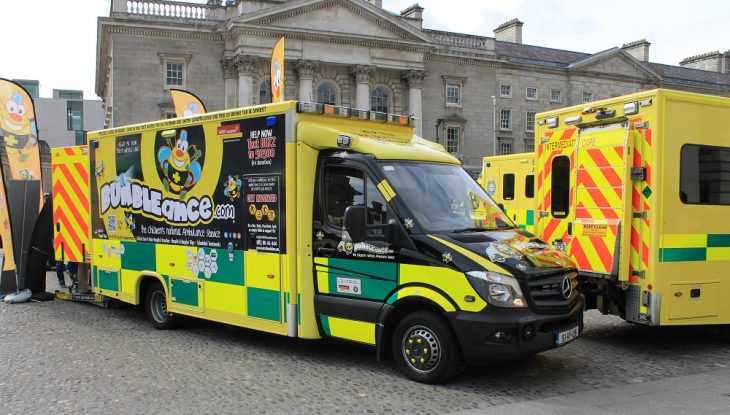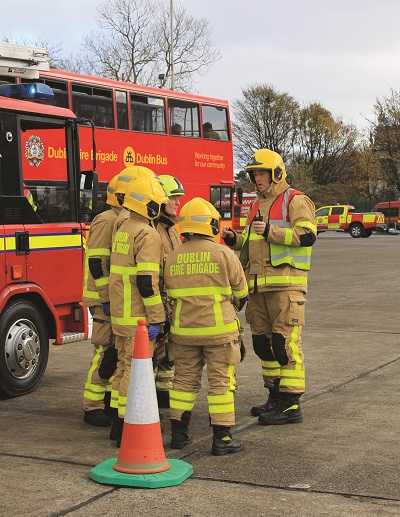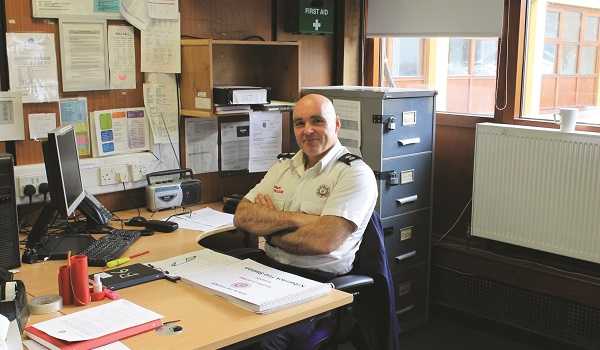The annual Chief Fire Officers’ Association conference was held in Croke Park in 2017, organised by Dublin Fire Brigade. Conor Forrest was there on the day.
Last May, Croke Park was the location for the Chief Fire Officers’ Association (CFOA) annual conference, an interesting and varied two-day event organised by Dublin Fire Brigade and which tackled the topic of expecting the unexpected. Drawing from fire services far and near, the comprehensive CFOA 2017 conference featured speakers on a broad range of topics from fire safety to media management. Washington DC Fire and EMS Chief Gregory Dean reflected on the systems in use in Seattle and Washington DC; Dublin City Council Senior Systems Officer John Lynch explained how business intelligence can be put to good use in the fire service; and Peter Holland, Chief Fire and Rescue advisor at the Home Officer provided an overview of the local and national structure of the UK’s fire services.
An opportunity to listen and learn from colleagues, not just in Ireland but around the world, and to discover best practice and innovation for the years ahead, the conference also looked to the future of fire services, with topics such as innovation, investment and funding on the agenda.
“As Minister with responsibility for policy oversight for fire safety and the provision of fire services by local authorities, my primary focus is on ensuring that local authority services are effective in achieving their objectives and meeting their statutory obligations in respect of the provision of fire services and fire safety. Key to that is to make sure that local authorities do all they can to do your great work and to give you the resources you need to be able to provide the service you provide,” said Minister for State Damien English, who opened the conference alongside Lord Mayor Cllr Brendan Carr, and reiterated his department’s commitment to fire services. “My job as your minister in this area is to work with my department and all local authorities to make sure that you get your fair share of resources to help you do what you do… If we can prove that you are spending the resources that you get in the best way, in the most effective way and stretching every Euro of that, that helps us with our business case to get more money for the service, to build on that.”

It was a theme that CFOA Chairperson and Dublin Fire Brigade Chief Fire Officer Pat Fleming picked up on later in the morning. “Funding is always an interesting one,” he said with a laugh. “In 2015, 20 new fire appliances for 16 counties were announced. Many of these are now only appearing in fire stations. Fire and rescue services are not discretionary items. Properly funded services are vital in defining a modern society and in supporting economic development and foreign direct investment.”
The issue of fire-based EMS has been in the public eye of late, with calls in some quarters to remove DFB’s ambulance call and dispatch function and to instead merge it with the National Ambulance Service (NAS). Alongside the importance of a collaborative approach to community fire safety, Minister for State Damien English touched on the topic of fire-based EMS services during his speech, noting the possibility of retained fire services assisting the National Ambulance Service in meeting the Pre-Hospital Emergency Care Council (PHECC) response targets, particularly in rural areas.
“I welcome the Minister’s comments on this today. It’s something that I’ve advocated on previous occasions, the positive benefits of providing life-saving medical intervention in support to hard-pressed colleagues in the NAS operating in rural Ireland,” said CFO Fleming. “I’m pleased that a comprehensive draft paper has been prepared under the aegis of the Keeping Communities Safe process, and I look forward to the further progressions and discussion of the feasibility of delivering this service in the interests of patient safety. Inter-agency cooperation in the public interest is not about individual agency status, but rather about delivering the best possible patient-centric service.”
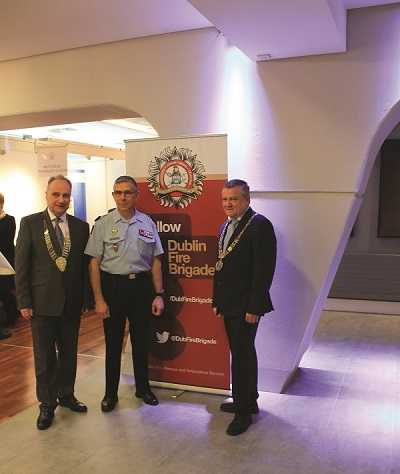
CFO Pat Fleming, Brigadier General Philippe
Boutinaud, Commander of the Paris Fire Brigade and Dublin City Council Lord Mayor Brendan Carr.
Preparation
The main theme of the conference was ‘Expect the unexpected’, with a conference programme reflecting this particular topic. One of the most interesting and well-received talks was given by Brigadier General Philippe Boutinaud, Commander of the Paris Fire Brigade, the largest fire service in Europe. Brigadier General Boutinaud was in command on the night of Friday November 13th 2015, when a series of coordinated terrorist attacks killed 130 people and injured a further 368, the deadliest incident in France since World War II. Later claimed by the Islamic State of Iraq and the Levant (ISIL), the attacks began when three suicide bombers detonated outside the Stade de France during an international friendly between France and Germany, followed shortly after by shootings and bombings at several cafés and restaurants, and then a mass shooting at the Bataclan Theatre during an Eagles of Death Metal concert. Having taken hostages within the theatre, none of the attackers survived following a police raid on the building.
During a discussion on the planning, preparation and response of Paris Fire Brigade, alongside lessons learned from the events, a complete silence blanketed the room as a harrowing video shot on the night of the attacks was shown, depicting the panic-stricken calls received by the emergency service controllers, the firefighters who responded on the ground, and the confusion of the injured who wandered the scenes. “My ambition this morning is to share with you, I’m not here to deliver a speech or deliver a lesson to you,” said Brigadier General Philippe. It’s just a question of… sharing my experience with you in case the unexpected happens in your country. Obviously, I hope that will not be the case.”
Though a terrorist attack of similar proportions on Irish soil is unlikely, there’s no doubt that our emergency services need to be prepared for whatever may come. “Whatever Oscar Wilde thought about that theme, all of us who provide and manage frontline operational emergency response services are very clear as to its meaning. Our primary role is to have the necessary resources in place to protect public safety and render humanitarian aid, which sounds simple enough,” said CFO Fleming. “However, the preparation required for the expected, and the nature and complexity of the unexpected, poses major challenges for us all. The nature of the potential scenarios we now have to prepare for has moved far from a single agency response to a fire or medical incident. Indeed, the complexities of these potential scenarios test all emergency services to the limit both individually and collectively.”



